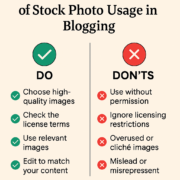Demystifying Google’s Algorithm: What Really Matters for SEO Placement
Struggling to understand Google’s algorithm for SEO placement? You’re not alone.
Many businesses find it challenging to decode what truly influences their rankings. Is it all about keywords, or do backlinks and content quality play a bigger role?
This blog is here to unravel the mystery of SEO placement. We’ll break down the essential factors and debunk common misconceptions.
Learn practical, actionable strategies to boost your rankings. Stay tuned to transform your approach and improve search rankings effectively. Read on!
The Role of Keywords
Keywords have always been an important part of SEO. In the early days, it was common to try to improve a page’s search ranking by adding as many keywords as possible to it.
However, Google’s algorithm has changed over time to favor content that uses keywords naturally. The focus has shifted from the number of keywords to where they are placed strategically, with an emphasis on how they fit into the content and their context.
Importance of Quality Content
One of the most important factors for SEO placement is still having good content. Google’s algorithm likes websites that give users useful, relevant information.
This means that content should be well-researched, useful, and updated often to meet the needs of the audience. Good content not only keeps visitors coming back but also gets them to share it, which increases your site’s natural reach.
Mobile-Friendliness and Page Speed
Google’s algorithm now gives more weight to websites that are mobile-friendly because more people are using them. With responsive design, a website will look good and work well on all devices.
Page speed is also very important; pages that take too long to load make users angry and cause more people to leave the site quickly. Making sure your website loads quickly can make the experience better for users and help your SEO.
The Significance of Backlinks
Backlinks, also known as “inbound links,” are another important thing that Google uses to decide how to rank websites. When other trustworthy sites link to yours, it tells Google that your content is valuable.
Still, not every backlink is the same. Links from websites with a lot of authority are more trustworthy than links from websites with less authority.
User Experience and Engagement Metrics
Metrics like bounce rate, dwell time, and click-through rate (CTR) help Google understand how good your website is. A low bounce rate means visitors like your content.
Longer dwell time shows they explore your site more. A high CTR means your titles and descriptions make people want to click.
Local SEO and Its Impact
Local SEO is a must for businesses that want to reach people in a certain area. Having a Google My Business page, using location-specific keywords, and getting good reviews are all things that can have a big effect on your local search rankings. For example, businesses can improve their local SEO by incorporating Austin SEO services on this page, helping to drive regional traffic.
Proven Techniques for Superior SEO Placement
For good SEO placement, you need to know how Google’s algorithm works inside and out. You can increase site visibility by focusing on good content, smart keyword use, and getting backlinks from trustworthy sites.
Mobile-friendliness and fast page speeds also help your site rank higher. Strong local SEO strategies and interesting user experiences are also very important.
If you keep working on these things, you’ll see improvements in your SEO placement. Follow these tips to get good at SEO placement and long-term success.
Did you like this guide? Great! Please browse our website for more!




